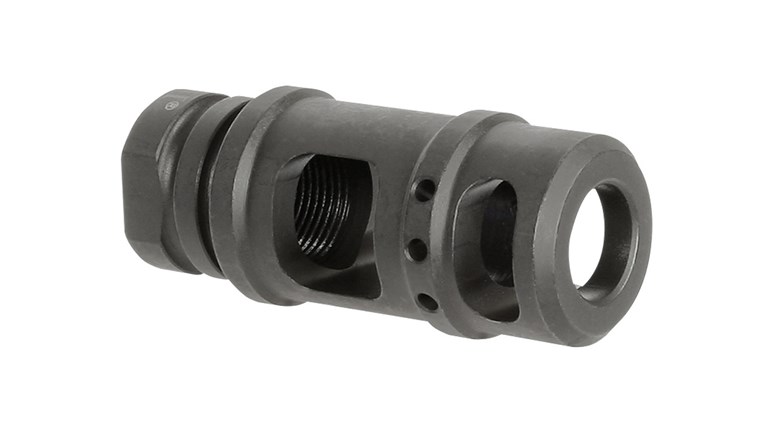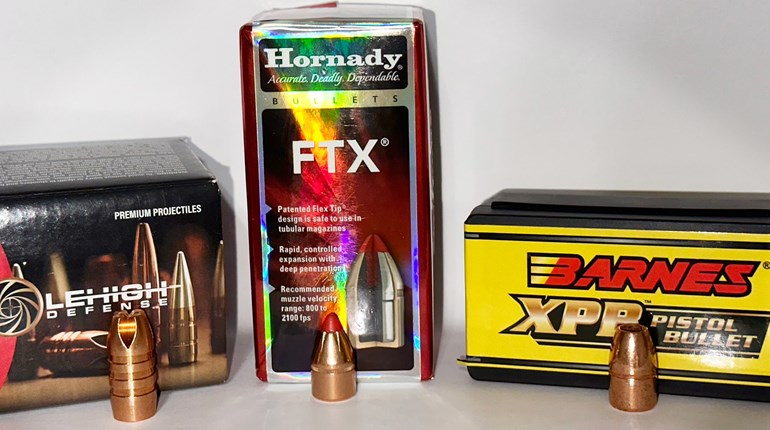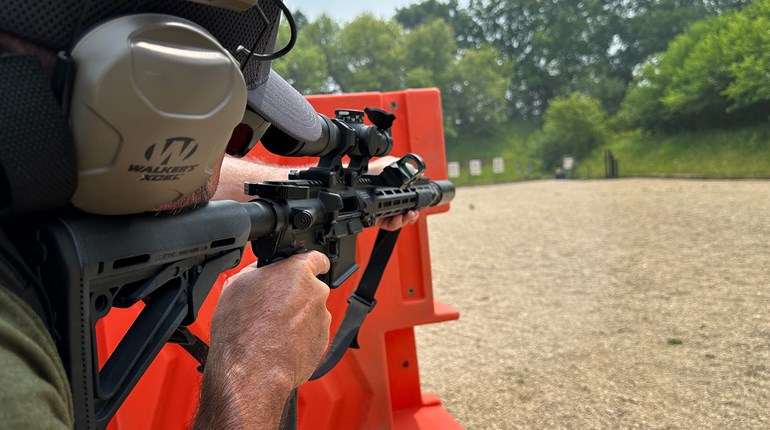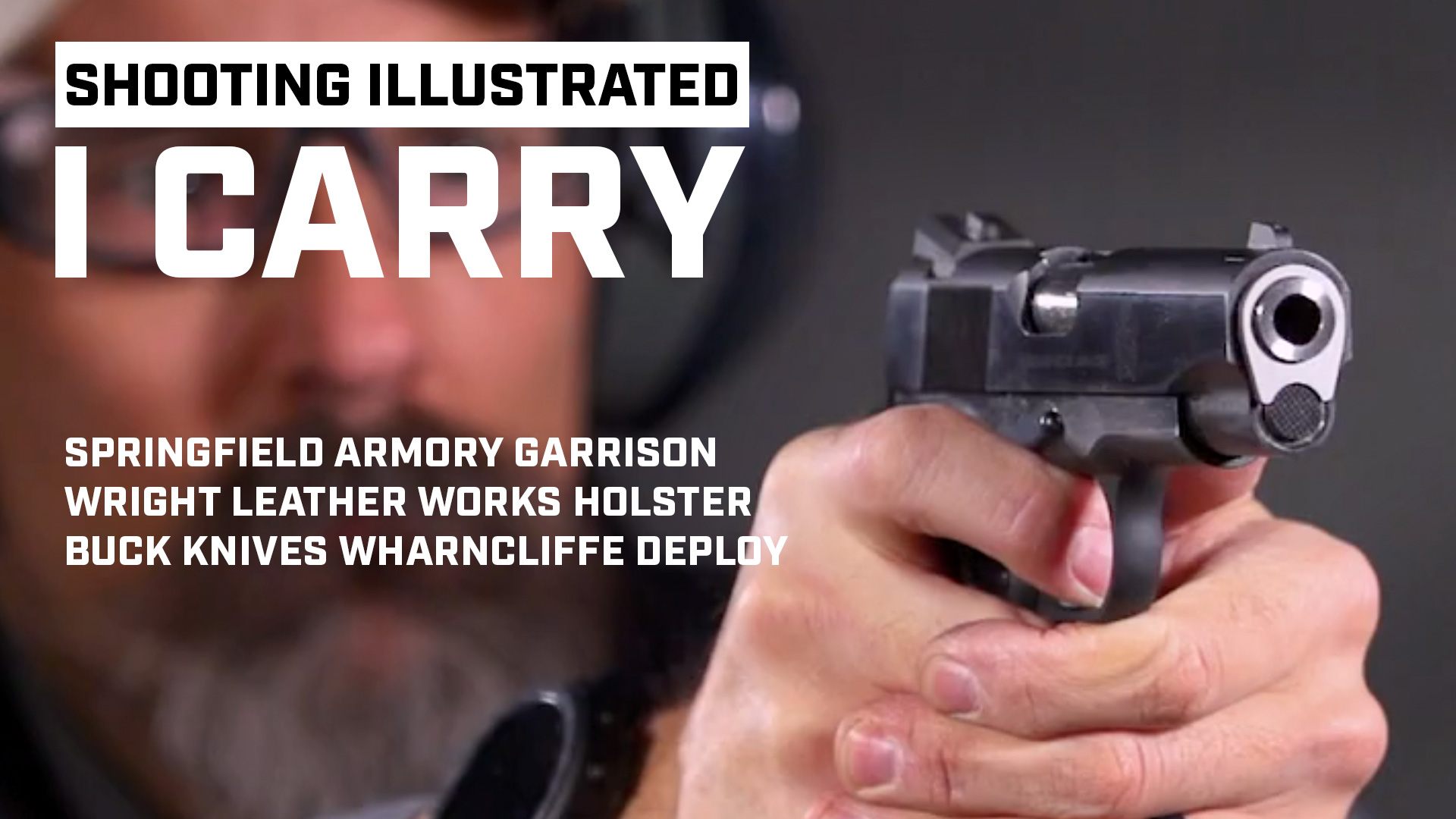
The two most prevalent pieces of equipment that first catch the eye on an AR-style rifle are the handguard and the buttstock. But what if I told you those aren’t the pieces that are most crucial to the firearm and the shooter operating together most efficiently? Spoiler alert: Most of these components involve the AR-15’s gas system, but there is one that isn’t tied to the gun’s modus operandi.
Muzzle Device
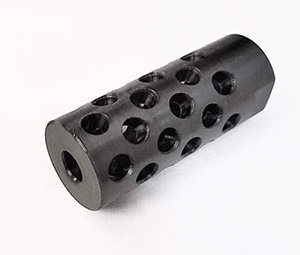 Let’s get the most obvious one out of the way. I know the argument could be made that an AR-15’s gas system of operation will still run fine with or without any kind of muzzle device, but what good does a fast-shooting semi-automatic pistol or carbine do if the gun recoils so much that you could run a bolt-action gun just as fast due to muzzle rise taking the sight picture off the target? That’s where a muzzle device, like SPT’s Hu-Du muzzle brake comes into play. By mitigating the upward momentum of the gun by redirecting what gas is left after being used for for cycling the action, shots can be placed on target in much faster succession, making the semi-automatic platform useful again. And the more you can direct upward, for the most part, the easier it is to maintain a sight picture, which is why brakes like the Hu-Du – which reduces muzzle rise and recoil by 80 to 90 percent – are so effective.
Let’s get the most obvious one out of the way. I know the argument could be made that an AR-15’s gas system of operation will still run fine with or without any kind of muzzle device, but what good does a fast-shooting semi-automatic pistol or carbine do if the gun recoils so much that you could run a bolt-action gun just as fast due to muzzle rise taking the sight picture off the target? That’s where a muzzle device, like SPT’s Hu-Du muzzle brake comes into play. By mitigating the upward momentum of the gun by redirecting what gas is left after being used for for cycling the action, shots can be placed on target in much faster succession, making the semi-automatic platform useful again. And the more you can direct upward, for the most part, the easier it is to maintain a sight picture, which is why brakes like the Hu-Du – which reduces muzzle rise and recoil by 80 to 90 percent – are so effective.
Gas Block
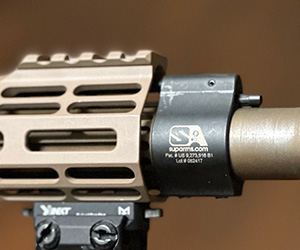 Face it: An AR-15’s gas system is filthy. Sure, the standard direct-impingement AR-15 gas system, while simple, runs by forcing dirty, hot gas – which is primarily made up of gritty carbon – back into the action. A clean AR-15 might spit out brass like hockey players spit out teeth, but eventually, things quit running as smoothly as they once did. Enter an adjustable gas block. Depending on the model – I prefer externally adjustable ones over a set screw – the AR-15’s gas system is now as easy as turning a dial like that on a microwave or a stove top to the proper setting. Furthermore, if you’re the type that prefers the peace and quiet provided by a subsonic load and a suppressor, you’ll more than likely need an adjustable gas block to regulate your AR-15’s gas system to bounce back and forth between supersonic and subsonic loads without issue.
Face it: An AR-15’s gas system is filthy. Sure, the standard direct-impingement AR-15 gas system, while simple, runs by forcing dirty, hot gas – which is primarily made up of gritty carbon – back into the action. A clean AR-15 might spit out brass like hockey players spit out teeth, but eventually, things quit running as smoothly as they once did. Enter an adjustable gas block. Depending on the model – I prefer externally adjustable ones over a set screw – the AR-15’s gas system is now as easy as turning a dial like that on a microwave or a stove top to the proper setting. Furthermore, if you’re the type that prefers the peace and quiet provided by a subsonic load and a suppressor, you’ll more than likely need an adjustable gas block to regulate your AR-15’s gas system to bounce back and forth between supersonic and subsonic loads without issue.
Buffer Weight
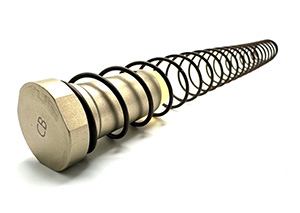 This one isn’t talked about quite as much as an adjustable gas block or a muzzle device, largely because the other two change the AR-15’s gas system so much between those two components alone that this part becomes an afterthought. But where a buffer weight change can help operation is by changing how hard parts within the stock are worked, as well as help take some recoil out of the gun. Most buffer weights are changed when going to big-bore AR cartridges, like the .450 Bushmaster, the .458 SOCOM, or the .50 Beowulf. Because those cartridges produce so much recoil in comparison to the standard 5.56 and therefore drive the bolt rearward with far more force, a heavier buffer will mitigate some of that impact from the bolt due to a heavier weight. Why? Because the buffer does as its name implies, and acts as a buffer between the bolt and the spring. As such, a heavier buffer will eat more of the bolt’s energy before impeding the recoil spring, as it will take more recoil force to initiate movement the heavier buffer. This in turn means less wear due to the jarring effects of recoil, both on stock parts and the shooter. While a change in buffer weights might not directly influence an AR-15’s gas system, it’s the direct recipient of Newton’s Third Law when an AR is fired, and can change quite a bit for the shooter.
This one isn’t talked about quite as much as an adjustable gas block or a muzzle device, largely because the other two change the AR-15’s gas system so much between those two components alone that this part becomes an afterthought. But where a buffer weight change can help operation is by changing how hard parts within the stock are worked, as well as help take some recoil out of the gun. Most buffer weights are changed when going to big-bore AR cartridges, like the .450 Bushmaster, the .458 SOCOM, or the .50 Beowulf. Because those cartridges produce so much recoil in comparison to the standard 5.56 and therefore drive the bolt rearward with far more force, a heavier buffer will mitigate some of that impact from the bolt due to a heavier weight. Why? Because the buffer does as its name implies, and acts as a buffer between the bolt and the spring. As such, a heavier buffer will eat more of the bolt’s energy before impeding the recoil spring, as it will take more recoil force to initiate movement the heavier buffer. This in turn means less wear due to the jarring effects of recoil, both on stock parts and the shooter. While a change in buffer weights might not directly influence an AR-15’s gas system, it’s the direct recipient of Newton’s Third Law when an AR is fired, and can change quite a bit for the shooter.
Trigger Guard
This doesn’t have anything to do with the AR-15’s gas system, but it is the smallest part that may change the shooter’s capabilities when it comes to ease of use. Most AR-15s use a flat trigger guard that sits flush to the lower receiver’s front and back portion of the trigger guard. The problem? Try fitting a glove in there and see how that works for you. This might be the smallest, most insignificant part of the AR-15, but it can make all the difference in how well the shooter can access and pull the trigger. Some trigger guard styles do more than just follow a slight downward curve to open the space in the trigger guard; Brownells Tactical Trigger Guard, for example, uses an entirely different shape to allow more room within the trigger guard. To further increase space, different triggers can be used, as the shoe can also determine how much room is available for the shooter’s finger to manipulate the trigger.
By changing out these four small parts, not only can an AR-15’s gas system be incredibly finetuned – which has its own merits when it comes to a shooter and how quickly and efficiently they can operate the firearm – these parts can drastically change how the shooter interfaces with the gun on a comfort level, too, making practice more palatable and more fun. Furthermore, these parts are typically cheaper to replace than swapping out entire furniture sets. Finally, these changes are ones those new shooters can make relatively easily by popping out a few pins or loosening a few screws (assuming the gas block is easily accessed), making these small modifications a great way to keep new shooters to the AR-15 platform shooting and giving them a pleasant experience while at the range.












